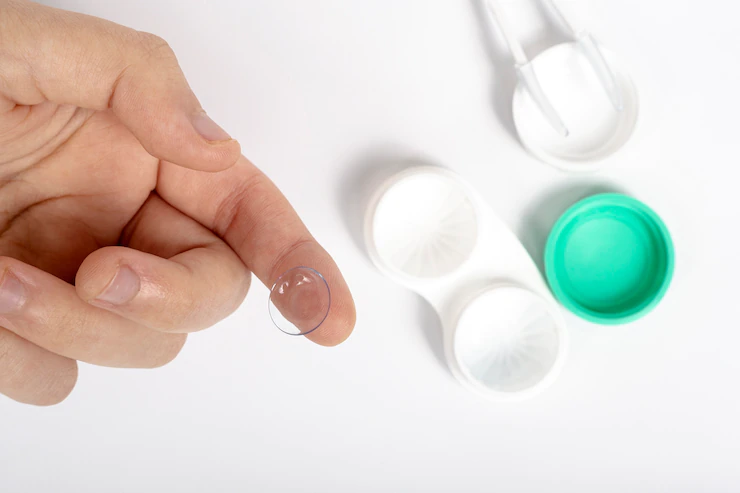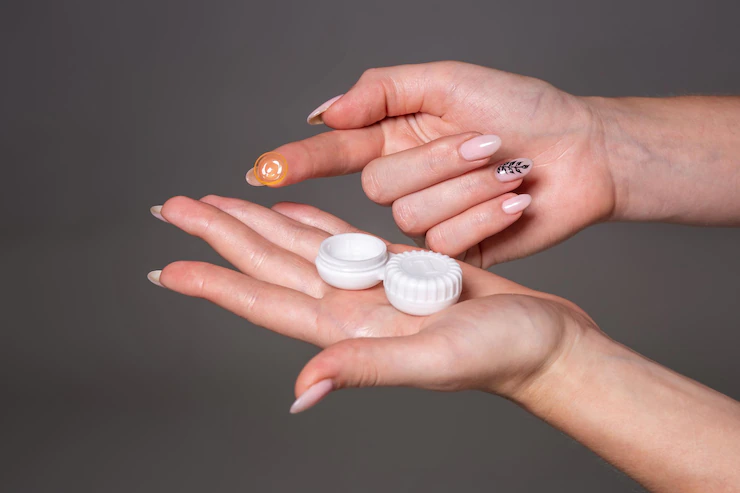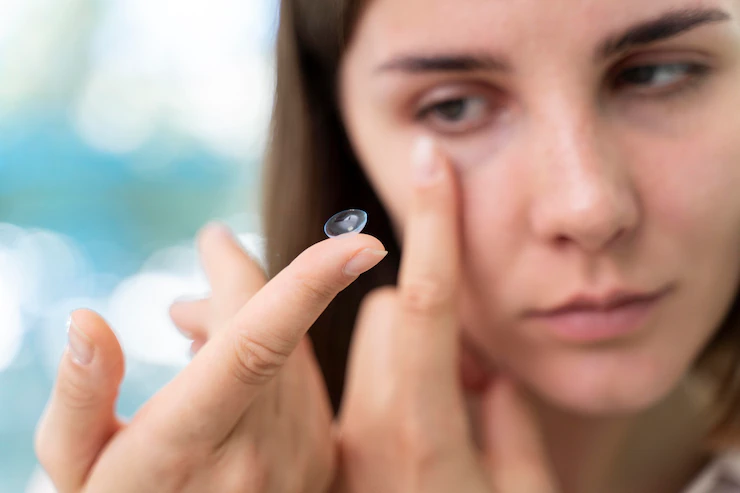A Quick Guide To The World Of Contact Lenses
The idea of contact lenses was born by Leonardo Da Vinci in 1508 and perfected in the 1930s by William Feinbloom- a New York-based optometrist. However, it was not until the 1970s that manufacturers started mass-producing contact lenses.
Today, contact lenses are a common alternative to eyeglasses and other types of vision correction. In fact, there are around 45 million contact lens wearers in the US, according to the CDC. But what exactly are contact lenses and what do they do? Are contact lenses better than eyeglasses? Here’s a glance into the world of contact lenses.
What Are Contact Lenses?

Contact lenses- commonly known as contacts- are small, round, thin disks that sit directly on the tear film of the cornea. They are called contact lenses because they are worn in direct contact with the eye.
Contacts can be corrective- meaning they are designed to correct vision problems- or non-corrective. Non-corrective lenses, also known as cosmetic or decorative lenses, are used as a fashion statement by changing the color of the eyes.
All contacts- corrective and non-corrective- are regulated by the US Food and Drug Administration as prescription devices. Thus, you need a current and valid prescription to purchase them.
What Corrective Contacts Are Used For?
Corrective contact lenses are used in place of eyeglasses to correct common refractive errors mainly;
- Hyperopia (farsightedness)
- Myopia (short-sightedness)
- Presbyopia (age-related farsightedness)
- Astigmatism (blurry vision at distances)
How Do Contact Lenses work?
Contact lenses work like eyeglasses by altering how the eye refracts light to focus it onto the retina. Let’s assume you’re nearsighted- a refractive error that causes your eyes to point the light in front of the retina instead of right on it.
In this case, contact lenses are designed to diverge the light rays, causing the eye to move the focal point backward and onto the retina.
Because contact lenses are fixated on the cornea’s surface, they move with the eye as it moves up and down and from side to side. Thus, they provide an experience much closer to natural sight than eyeglasses.
Types Of Contact Lenses:

Up until 1939, contact lens wearers didn’t have any other choice besides glass lenses. Today, though, pretty much all contact lenses are made of plastic and fall into two major categories- soft and hard. Each type has its unique benefits and drawbacks and your optometrist will help you choose between them.
1. Soft Contact Lenses
These are contacts made of soft and flexible materials that allow them to hold more water. Soft contact lenses are more popular than hard lenses and are the most prescribed in most eye clinics. While they are not necessarily the best, most people choose soft contact lenses because they are more comfortable, especially for first-time wearers.
Additionally, because they are soft and larger, it’s easy for the wearer to fit these contacts into the eye. Also, soft contact lenses are made-to-stock, so they are easily available off the shelf.
On the other hand, because soft contact lenses are not custom-made, they are not always available in every parameter. Secondly, standard soft contact lenses are not the perfect choice for people with a high amount of astigmatism and other unique prescriptions.
Types of Soft Contact Lenses
i) Daily disposable lenses– also known as single-use or dailies, these are lenses that are worn throughout the day and then permanently disposed of at the end of the day. Because you pop in a fresh pair every morning, daily contact lenses don’t require cleaning or special storage.
ii) Daily wear contacts– these are soft contact lenses meant to be worn daily and replaced after a week, two weeks, or even a month, depending on the manufacturer’s instructions.
Daily wear contact lenses need to be removed nightly for cleaning and disinfecting. However, in some brands, for instance, Acuvue Oasys bi-weekly contacts with 24 lenses per pack can be worn overnight for up to a week.
iii) Extended wear contacts– as the name suggests, these are contact lenses designed for prolonged use. You can wear them throughout the day and sleep in them at night for a week or even a month, so long as your eye care professional has approved it.
That said, extended-wear contacts must be replaced as directed by your doctor. And while some can be worn continuously for up to a month, it’s best practice to clean them at least once every week.
2. Rigid Gas Permeable Contact Lenses
Rigid Gas Permeable contacts are made of rigid and durable silicone-containing compounds designed to let oxygen pass through to the eye. While they are firmer than soft contacts, RGPs aren’t as hard as traditional glass contact lenses that were common before 1971.
Although soft contact lenses are the most popular today, Gas Permeable lenses have several unique advantages that make them more appealing. For one, hard contacts are custom-made, meaning they are tailored to the unique surface of your corneal surface. Thus, you can expect them to enhance your vision with better image quality even if you have a unique prescription.
Another significant advantage of Rigid Gas Permeable lenses is their durability. With proper care and regular cleaning, hard contact lenses can last up to two years or even longer, assuming your prescription remains stable. And it’s not like they cost the earth. Because they last longer, hard contact lenses tend to be cheaper than soft contacts in the long run.
That said, hard contact lenses take a few days to get used to because of the rigid materials used. Also, Rigid Gas Permeable contact lenses require good daily cleaning to prevent dust and debris from collecting underneath.
What Are The Advantages And Disadvantages Of Contact Lenses?

Pros
- They grant all-around vision because they have a wider field of view.
- Because they are worn inside the eyes, you can go about your life without the worry of losing or breaking them, as it’s the case with eyeglasses.
- Unlike eyeglasses, contact lenses don’t cause glare if worn correctly.
- Contact lenses are more convenient and easy to use and are a good fit in almost any situation or environment.
- Compared to eyeglasses, contact lenses are more practical for sports people.
Cons
- Contact lenses can cause or aggravate dry eyes if not properly used and cared for.
- Unlike eyeglasses, some people may find wearing and removing contacts difficult.
Although ideal in terms of comfort, soft contact lenses are prone to tearing.
Read Also:
- Top Natural Treatment For Black Eyes
- How Droopy Eyelid Surgery Can Restore Your Vision
- Symptoms of Nursing Home Abuse: What to Keep an Eye Out For



